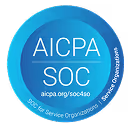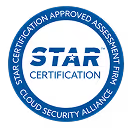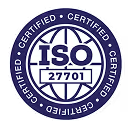In the high-stakes world of professional services, resource management is what keeps your projects on track, your team aligned, and your clients satisfied. It can be the difference between a thriving, efficient team and one that's struggling to keep its head above water.
But, let's face it, mastering resource management isn't exactly a walk in the park. There’s a lot that can and will, go wrong,
In this article, we look at 10 common resource management mistakes that professional service teams make and how to avoid them to make your team unstoppable.
10 common resource management mistakes to avoid
1. Failure to clearly define resource requirements
One of the most fundamental mistakes in resource management is failing to identify what resources are needed, including their specifications, quantities, and quality. Without a clear understanding of resource requirements, it’s only natural that you could under or over-allocate resources.
For instance, in a software project, you need to clearly outline the essential resources required, from the specific skill sets of the team to the technology and tools needed. Failing to do this accurately will lead to project hiccups, missed deadlines, and even budget overruns as you scramble to fill the resource gaps.
To avoid this mistake, invest in thorough resource planning, involving domain experts in the process. Ensure clear documentation of resource requirements, including specifications and quality standards.
2. Inefficient allocation of resources
Resource misallocation is what happens when you don't put much thought into who does what
Imagine a restaurant with a team of skilled chefs that makes most chefs wash dishes all day while a few cook all the dishes.
In the professional services world, this happens when you assign resources to tasks or projects without carefully considering their skills, availability, and the task's requirements. The result? Slower project progress, more errors, and a bunch of unhappy team members.
This approach directly influences your team members' morale and well-being. Overloaded team members often experience frustration and burnout, potentially leading to reduced work quality and an increase in errors. Conversely, underutilized resources may feel undervalued and unproductive, negatively impacting their job satisfaction.
To avoid falling into the trap of poor resource matching, it is crucial to have seamless visibility into each resource's skills, availability, and workload. Utilizing resource management tools provides this essential insight and supports intelligent resource allocation, ensuring that every team member is optimally utilized and content in their role.
3. Not having a resource management plan
A resource management plan simplifies capacity planning by outlining the methods and processes for acquiring, allocating, and managing resources. Without such a plan in place, you risk disorganized and reactive resource allocation, leading to inefficiencies and missed opportunities. There's also a higher risk of resource conflicts and underutilization.
To avoid this, you need to develop a comprehensive resource management plan that includes resource identification, allocation procedures, contingency plans for resource shortages, and regular reviews to ensure alignment with evolving project needs.
4. Failing to dynamically align resources with changing business needs
In the professional services landscape, business needs can change rapidly. This affects resource requirements, and neglecting to adjust resources accordingly can lead to misallocation. Market fluctuations, shifting client demands, and technological advancements can all trigger these changes.
The failure to identify and respond to these changes promptly can result in resource shortages or overallocation. The consequences are clear: project delays, cost overruns, and diminished client satisfaction.
To address this challenge, you must establish mechanisms for continuously monitoring and assessing changing business needs. These mechanisms should be integrated into the resource management Plan, enabling real-time adjustments and resource allocation aligned with current requirements.
5. Inadequate resource forecasting
Resource forecasting, though a pivotal element of resource management, is frequently neglected. Organizations fail to accurately anticipate future resource requirements and their availability.
When you don't possess a clear understanding of future resource demands, you expose your projects to avoidable risks and create new uncertainties. These uncertainties can manifest as resource shortages, delayed projects, and even the need to procure external resources at premium costs. These consequences can significantly impact project timelines, budgets, and overall efficiency.
The key to avoiding this mistake lies in implementing robust forecasting methods. By factoring in essential elements such as project pipelines, historical data, and anticipated growth, organizations can better prepare themselves to handle future resource needs effectively. This forward-looking approach allows for a more proactive, well-informed, and resource-efficient resource management strategy, minimizing the risk of resource-related crises.
However, resource forecasting becomes considerably more challenging without the right tools. Modern resource management software often comes equipped with in-built forecasting capabilities. These tools can analyze historical usage patterns, current workloads, and anticipated project growth to provide accurate predictions of future resource requirements. By leveraging such technology, you can take a more proactive and well-informed approach to resource management.
6. Ignoring resource performance metrics
Efficient resource management relies on continuous performance monitoring. Ignoring resource performance metrics means missing opportunities for improvement. When resource performance goes unnoticed, inefficiencies persist, accountability remains vague, and resources may continue to be allocated to underperforming individuals or teams. This inevitably impacts the overall delivery and success of projects.
For instance, if you are a professional services firm, without tracking resource performance, you may not realize that one of your star consultants is consistently underperforming across projects. This oversight can lead to client dissatisfaction, project delays, and potentially even team morale issues.
To prevent this, establish and monitor key performance indicators (KPIs) for all your resources. Additionally, focus on developing a culture of regular performance reviews and constructive feedback sessions with project managers.
7. Lack of cross-project visibility and collaboration
Effective resource management often requires collaboration between different departments and teams – across projects. The absence of cross-departmental visibility and collaboration can lead to inefficiencies and resource conflicts. For example, one department may allocate resources without considering the availability or workload of another department. This lack of coordination can result in resource bottlenecks and project delays.
You need to have a single source of truth for resource allocation and workload visibility. A good way to do this is to invest in a centralized platform that enables inter-departmental communication and provides real-time visibility into resource allocation and workload across projects. This centralized approach ensures that all teams work from the same set of data, allowing for more accurate and informed resource management.
8. Overlooking resource and client feedback/insights
Resource management can greatly benefit from the insights and feedback of your resources and clients. On one hand, resources often have a deep understanding of their capabilities, workload, and the challenges they face in projects. On the other, client feedback can provide insights into their changing needs and preferences.
Failing to tap into this knowledge can lead to resource mismatches, unaddressed issues, and a sub-optimal customer experience.
To address this mistake, establish channels for resources and clients to provide feedback on their workload, project experiences, and resource allocation preferences. This input can help refine resource management strategies and improve overall resource satisfaction, project outcomes, and client relations.
9. Not adequately accounting for project risks
Resource management and project risk management go hand in hand. Failing to account for risks when managing resources can lead to unforeseen challenges and project disruptions. Risks such as resource unavailability, unexpected attrition, or external factors can impact resource allocation.
To avoid this risky mistake, implement risk analysis and management as a core component of resource management. This proactive approach involves identifying potential risks, assessing their potential impact, and developing robust mitigation strategies. By doing so, you pave the way for more resilient and adaptive resource management, ensuring smoother project execution even in the face of unforeseen obstacles.
10. Failure to use resource management software
Resource management software is a game-changer when it comes to improving resource utilization and even optimizing your entire workflow. With the right tool in place, you improve resource planning and forecasting while eliminating the risks of manual errors, project delays, and suboptimal resource allocation.
Modern resource management software solutions offer an all-encompassing approach, integrating features like resource tracking, real-time scheduling, and workload management, ensuring your resource allocation process is a well-oiled machine.
Rocketlane’s resource management capabilities
Rocketlane offers a robust set of resource management capabilities that can help streamline and optimize your resource allocation processes. These features include:
- Centralized project and resource management: Rocketlane provides a central hub where you can efficiently manage and allocate resources for all your projects. Say goodbye to scattered spreadsheets, checklists, and documents operating in silos. With Rocketlane, you have a single source of truth for resource allocation.
- Automated workflows: Create logical and customizable project plans and templatize them for efficiency. With Rocketlane, you can automate the allocation of resources based on project requirements and team availability. This reduces human error and ensures a consistent customer experience.
- Real-time resource availability insights: Access real-time data and reports to track project progress, trends, delays, and milestones. Rocketlane's custom dashboards allow you to visualize what matters most to your business, enhancing resource management decisions.
- Simplified resource management: Rocketlane offers intuitive timesheets and time-tracking reports for accurate forecasts and insights. This hands-off approach to resource management ensures that your teams are focused on their tasks and not burdened with administrative overhead.
Rocketlane's resource allocation capabilities can help balance workloads, ensuring that no resource is overloaded or underutilized. This feature promotes the efficient allocation of skills and expertise across projects.
- Client and internal communication in one place: Effective communication is key in resource management. With its unified approach, Rocketlane streamline communication with clients, employees, and stakeholders, ensuring that everyone stays informed and aligned.
Rocketlane is thoughtfully designed to streamline project management, simplify resource management, improve efficiency, and boost project profitability every step of the way.
Try Rocketlane for an easy way to avoid common resource management mistakes
At Rocketlane, we're committed to simplifying everything you need to deliver better services – from planning and forecasting to improved resource management to risk management. We've carefully designed our platform to empower you with the capabilities and insights you need to make project management and delivery simpler and easier.
With Rocketlane, you can effortlessly steer clear of these common resource management missteps, ensuring your projects are executed with precision and efficiency.
Book a demo to see this in action, or sign up for a Rocketlane 14-day trial today.
FAQs on resource management mistakes
1. What are the consequences of failing to define resource requirements accurately?
Failing to define resource requirements accurately can lead to project delays, budget overruns, resource shortages, and frustrated team members. It can result in a lack of clarity on what resources are needed, impacting project success.
2. How can I efficiently allocate resources for professional service projects?
To allocate resources efficiently, you need to assess team members' skills, availability, and workloads for every project you undertake. Using resource allocation tools and methodologies can help balance workloads and avoid under- or overallocation.
3. What is the role of a resource management plan?
A project resource management plan outlines the methods and processes for acquiring, allocating, and managing resources. It's essential as it helps project managers with a structured approach to resource management, preventing disorganized and reactive allocation.
4. How can a centralized platform improve cross-project collaboration and visibility?
A centralized platform offers a single source of truth for resource allocation and workload visibility. It enables inter-departmental communication, providing real-time insights into resource allocation across projects and promoting better resource planning. It gives team members access to insights beyond their own project, so they can collaborate better with their counterparts in other departments.
5. What are the key features to look for in resource management software?
When choosing resource management software, consider features such as resource allocation and scheduling, workload management, performance tracking, and integration with other project management tools. Look for tools that can adapt to your organization's specific resource management needs by prioritizing solutions that offer free demos and trials.
6. How can resource management tools assist in performance monitoring?
Resource management tools offer in-built capabilities for tracking and monitoring resource performance metrics. They provide real-time insights into how resources are contributing to projects, allowing for timely adjustments and improvements.
7. Are there specialized resource management tools for professional service teams?
Yes, there are resource management tools specifically designed to cater to the unique needs of professional service teams. These tools often include features tailored to resource allocation, project tracking, and client management, making them an ideal choice for service-oriented businesses. Rocketlane is an example of such a tool.
8. How can resource management software enhance resource forecasting?
Resource management software can analyze historical data, project pipelines, and anticipated growth to provide accurate resource forecasting. By offering insights into future resource needs and availability, these tools help organizations proactively address resource demands and challenges.












